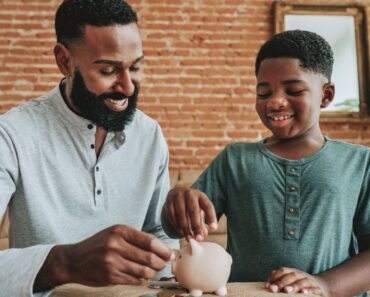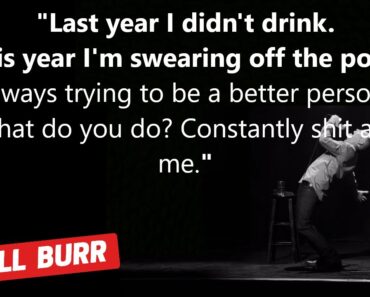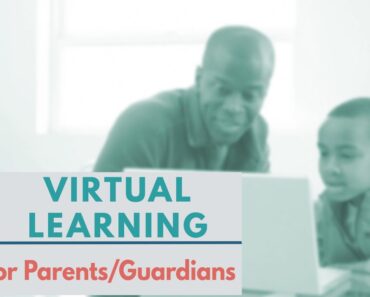There’s a lot on a parent’s to-do list, and playing with your kid doesn’t always make it to the top. But play is important for your kid’s development, and getting down on their level to goof off for a few minutes can actually shave some of the stress off your day. It’s a win-win. We turned to parents and experts to discover the best ways to have fun with your kid, at every age.
How to play with your baby
The time you spend playing with your baby is the beginning of developing their self-esteem and self-worth, because somebody is following their lead and engaging with them and their world.
Keep it simple: The good news is, you don’t have to spend a lot of money buying fancy toys for your baby, because their favourite toy is you, says Karyn Positano, a child-life specialist and ECE at the Hospital for Sick Children in Toronto. To “play,” you really just need to respond to them, she says. “When infants babble, talk back. Give words to what they’re saying or what you think they might be thinking.” You can also label their emotions, which helps with early language acquisition.
Rev them up: When you’re engaging with your baby, give them enthusiastic feedback—a big smile or a clap—for their efforts. This will encourage them to remain focused, which helps develop and maintain optimal dopamine levels in their brain, setting them up to be resilient and interested in learning as they grow.
Time it right: Pay attention to your baby’s cues. They’ll give you signals when they want to play and when they’ve had enough, says Positano. “You’ll know that an infant is ready to engage with you because suddenly they’ll be looking at you, and typically it’s after they’ve been fed or woken up after a nap,” she explains. They’ll also let you know when they are ready to move on from an activity by looking away or starting to get upset.
Touch and go: Finger games like Round and Round the Garden or interactive songs where you move your baby around while you sing (such as “Zoom, Zoom, Zoom, We’re Going to the Moon”) offer something called rhythmic movement stimulation, which is essential for teaching kids how to regulate their movements, says Hasmig Adjeleian, an occupational therapist who works with young kids at the Children’s Hospital of Eastern Ontario in Ottawa. Also a good idea: Get out the textured and crinkly books so they can explore a variety of textiles and surfaces. “With sensory play, they become sensitized to touching different things and feeling different things,” she explains. “This is soft, this is hard. This is fast, this is slow.”
Include them: Another way to incorporate sensory play is giving them items from around your home, like wooden spoons and metal pots and pans, to bang on while you strike a task off your to-do list. That’s what Liz Vlietstra used to do with her two kids. “Sometimes you can just sit there and quietly do something else, because they don’t always need you to be fully engaged with them, but they want you to be there and present and respond when they do something.”
Double tummy time: Your baby needs time on their belly to build their back and core strength, so you may as well use that time to engage with them in a fun way. “Get down to where they are and let them see your face and hear your voice,” recommends Positano. “Sing songs or have a board book on hand.” Some babies don’t like tummy time, and this will keep them interested in it for longer.
How to play with your toddler
Stay close by: At this age, kids are becoming more independent and starting to develop their own interests, but they definitely still need you close by. This is because independence often comes with frustration, and having a parent who stays calm and helps them label their emotions and work through them is important, explains Positano. They also love to show off any new skills to trusted adults.
Puzzle them: Puzzles with large chunky pieces help develop motor skills and also help advance problem-solving abilities, explains Positano. Take turns putting in the pieces: You go first to show them how it’s done, then let them try without you jumping in—unless they get really frustrated. Connie Huson, a former kindergarten teacher who now works as a playroom consultant, also recommends building together with blocks or Duplo, which supports fine motor skill development.
Get up and go: If they’ve learned to walk, try activities like kicking a ball back and forth, which helps them develop new physical abilities but also offers other benefits. “They’re learning about taking turns and co-operation and early rules and negotiation,” says Positano. Gentle roughhousing (like flying them around like Superman) is a great way to bond with kids and work on relationship skills like consent. Or turn on some music and have a dance party in the living room.
Level up: Now’s also the time to help them extend their play so that it’s a bit more complex, which will help them stick with their activity for longer. For example, suggests Vlietstra, if you’re at the park and your child is playing with a car in the sandbox. You could show them how to make a road for the car by dragging your foot in the sand. This type of interaction helps kids become curious and engaged learners.
Embrace your mini-me: Toddlers love to imitate you—so let them. If you’re gardening, give them some digging tools. Or set up a play kitchen in your own kitchen, so that when you’re cooking, they can play alongside you, suggests Lynne Newman, an occupational therapist and a mom of two girls, ages seven and nine.
Play Picasso: Grab some chubby crayons and coloured paper and trace their hands (and let them try to trace yours), then colour them in together. Or let them create a masterpiece and tell you all about it. Any type of drawing or colouring will strengthen their hands and develop their fine motor skills. Finger painting is fun too!
How to play with a preschooler
Imagination station: Kids this age love dressing up in costumes, pretending to be fantastical creatures or taking on roles like teacher or astronaut. This type of play really needs a partner, and your kid will love seeing you take on a new persona. (Tip: When playing doctor, always choose to be the patient—you get to lie down!) You can also use blocks to build structures for stuffies, dolls or cars together.
School prep: Who can resist smooshing things like playdough and kinetic sand with your fingers? It’s a great way to work on fine motor skills, which will help your kid when they begin handwriting. And this is a simple way for parents to de-stress, too—you can zone out a bit as you sit and roll out snakes or make pretend food for each other.
Put them to work: Preschoolers crave feeling like a valued part of the family, says Vlietstra. Get them to help you with household tasks like matching socks or washcloths. Making a game of it—perhaps by having a race to see who can fold their pile the fastest—is a great way to both teach them how to be a helper and to have fun.
Get on their level: Kids can get really into the things they like at this age, notes Vlietstra. “Learning the language of what they’re interested in—like the names of Paw Patrol characters—gives you something to talk about.” Like all people, young kids want us to take an interest in their lives.
Ready to rumble: Don’t be afraid to ramp up the roughhousing with preschoolers. “Play wrestling is really good from a sensory perspective and also from a social and emotional perspective, because it helps them let go of bottled-up feelings,” says Newman.
Let them lead: In imaginative play, let your preschooler take charge. This shows them you value their idea—but if they get stuck or ask for suggestions on what to do, it’s not wrong to give them two or three options.
How to play with your school-aged kid
Play by the rules: “Now that kids are in a school setting, where they need to learn rules, they become more fascinated by games with rules,” Positano explains. Pull out the cards or board games, or engage in a physical game, like tag.
Loosen up: Because kids are in a structured environment for most of the day, either in school or in extracurricular activities, playing with them using open-ended toys like LEGO®, dolls or Playmobil, where you build imaginative worlds together, lets them be free to explore their creativity, says Positano. Adjeleian also recommends a “body break” where you dance around the kitchen together or play a 10-minute indoor soccer game.
Game on!: If your kid is into video games, hanging out when they’re gaming, even for just a few minutes, still counts as playing as it gives you an opportunity to see what they’re doing, engage with them and show you care about what they enjoy. Vlietstra’s eldest is a Minecraft fan, so she’s taken the time to learn the basics of how the game works and chats with him about what he creates. “If he’s built an art museum in Minecraft, then it might be a moment for us to talk about art,” she says. You can also join in the fun.
Play hard: Try skating, tobogganing, basketball, tennis or any other physical activity you enjoy. Don’t feel the need to go easy on them: Kids this age actually thrive on competition, and activities with a lot of sensory input are a great way for kids to focus their energy and then feel very calm and content afterwards.
Share your passions: As kids grow up, you can also start to share your hobbies with them, like baking, knitting or fixing cars, says Huson. While it’s important to follow their lead when it comes to their interests when they’re younger, as they grow up, getting them to try something that’s not necessarily their thing, but important to someone they love, builds healthy relationship skills, like being generous and considerate. (Of course, if they end up hating it, don’t force them.)
Don’t overdo it: Unstructured time at this age is essential, notes Huson, so try to make space in your kids’ schedule for it. “As adults, we are so excited when we have a weekend where we don’t have to do anything. We want to give our kids as much of that time as possible,” she says.

































